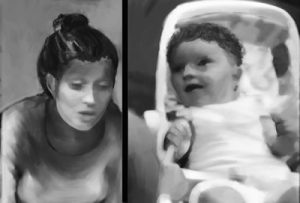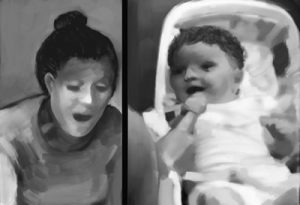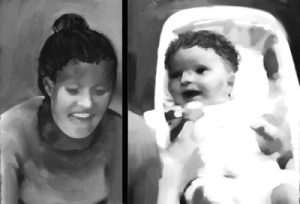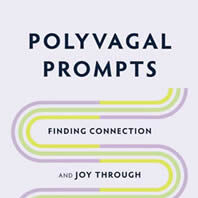Reviewed by Nancy Eichhorn, PhD
I grew up listening to my parents discuss John Bowlby and Mary Ainsworth’s research and work with attachment. I heard scads about Eric Erickson and Jean Piaget, about Barry T. Brazelton and Touchpoints, Watch, Wait and Wonder, Circle of Security, and more. Babies, families, and development were tops in my parents’ professional and personal lives. As a student myself, first studying early childhood development then education and on to clinical psychology, attachment theory was a constant staple. Yet, my involvement was typically with students and then adults in clinical settings so I worked with and understood the ramifications of secure and insecure attachment in our current day-to-day lives. Getting to the headwaters of the relationship, the earliest origins of attachment was understood in a more global sense—more about what the parents did and didn’t do, but not on a micro level.
Beatrice Beebe, Phyllis Cohen and Frank Lachmann now offer visual insight into the makings of attachment.
Their newest book, The Mother-Infant Interaction Picture Book: Origins of Attachment, provides pictures of the minute interactive experiences that in the end (over repetitive experiences) impact our attachment patterns. The idea to use pictures to depict the interactive components arose to show readers what occurs between mothers and infants (to help “see”) and to protect the participant’s identities. There’s also a DVD that Beebe narrates, step-by-step, showing one mother with her infant. The process helps readers to understand more of what the drawings show. There’s plenty of detailed data accompanying the drawings to guide readers as well. It took Beebe, Cohen and Lachmann ten years of research, data collection and coding to predict attachment outcomes. The illustrations used in the book come from this extensive research.
The book offers an informative Introduction that discusses the role of mother face-to-face communications in secure and insecure attachment patterns. The authors explain why the infant’s age at 4 months is necessary and why they use microanalysis. They recommend readers watch the DVD first and then get into the book—the DVD is the foundation for the book. Their research has shown that these interactive patterns predict subsequent infant attachment patterns when infants are one-year-old. They offer ten illustrative sequences of interactions at four months that predict both secure and insecure infant attachment. Their goal is to translate the non-verbal language seen in the interactive sequences into words and thus be useful in clinical settings (so clinicians can help mothers and babies change their process to in effect create secure attachment patterns, which will influence the rest of their lives).
Part One explores the ins and outs of mother-infant face-to-face communication with conversations about what the drawings actually illustrate and attachment assessed at one year (of infant age). Infant abilities (i.e., correspondences and contingencies at birth, and life as social creatures) are included along with reasons why brief moments of mother-infant interaction are so powerful. Chapter 2 goes in-depth into microanalysis and Chapter 3 discusses the science of patterns of communication including behavioral correspondences, mirror neurons, the vagus nerve, self and interactive regulation and dyadic action-dialogues. The illustrated glossary of terms helps readers as they move forward in the text.
Part Two is all about the drawings. Each chapter, there are 10 chapters in this section, highlights one attachment pattern, be it secure or insecure (insecure-avoidant, insecure-resistant and insecure-disorganized are described individually). Reading this section several times and studying the drawings helped me create a better foundation of understanding and application.
While the writing in the opening sections (the introduction and Chapter 1 namely) felt redundant, the content that follows offers readers a chance to immerse themselves into micro details that make sense in the context of this picture book. The authors walk you through each series of drawings so that you see what is typically missed with the “naked eye”, what the authors refer to as their social microscope. Readers learn to understand the significance of multiple modalities that occur during face-to-face communication that not only apply to mother-infants but to any and all human beings—learning to look at each of the components in our nonverbal interactions and decipher them has the potential to help us understand what’s happening underneath the words in our conversations. I’ve heard that we take in more from body language and vocalics (pace, tone, etc.) than from the actual words themselves, these drawings clearly support this assertion.
Looking at the minutiae, Beebe, Cohen and Lachmann’s studies opened my eyes. They coded: attention (gazing at and away from the partner’s face); orientation (infant’s head orientation and mother’s spatial orientation); emotion (infant facial affect-degrees of positive to negative facial expressions, infant vocal affect, mother facial affect); and touch (infant touching self, object, mother, and mother touching infant from affectionate to intrusive forms of touching) (p. 21). For instance, they discuss the meaning of mother’s orientation (sitting upright, learning forward or looming in) and how it depends on what’s happening in the other modalities such as gaze and facial expression, i.e., if the mother “looms directly in, close to her infant’s face” but she’s smiling, her infant is less likely to become upset (p. 21).
The heart of the book is truly Section Two.
 Here each experience is expanded via picture and descriptions. For instance, Chapter 4 describes facial mirroring in the origins of secure attachment (p. 63). It starts with minute-second 01:33-01:35. A storyline sets the stage: “The mother and infant rise into mutual delight. They respond to the other’s slight head and mouth movements as they increase their positive facial affect with mutual gaze.” Frame 1 depicts the mother and infant directly oriented to each other vis-à-vis and gazing at each other. Their faces have slightly positive interest expressions. The infant holds the mother’s finger with his right hand. In Frame 2, within the same second as Frame 1, the infant’s interest expression becomes more positive and there is a hint of a smile. The mother partially closes her mouth (from the film they know she is singing).
Here each experience is expanded via picture and descriptions. For instance, Chapter 4 describes facial mirroring in the origins of secure attachment (p. 63). It starts with minute-second 01:33-01:35. A storyline sets the stage: “The mother and infant rise into mutual delight. They respond to the other’s slight head and mouth movements as they increase their positive facial affect with mutual gaze.” Frame 1 depicts the mother and infant directly oriented to each other vis-à-vis and gazing at each other. Their faces have slightly positive interest expressions. The infant holds the mother’s finger with his right hand. In Frame 2, within the same second as Frame 1, the infant’s interest expression becomes more positive and there is a hint of a smile. The mother partially closes her mouth (from the film they know she is singing).
 From Frame 2 to Frame 3, in the next second, both continue in mutual gaze and become more positive. The mother has a partial gape smile, while the infant has a full smile. The mother and infant again match the other’s facial expressions. The infant continues to hold the mother’s finger with his right hand. From frame 3 to frame 4, one second later, both the mother and infant heighten their smiles. The mother reaches a full gape smile” (p.65). Then, thirteen seconds later, the authors offer a continuing story line where the infant begins to look down and move his head down and close his mouth. The mother’s smile tenses. She moves forward and pokes his tummy. The infant looks away, perhaps for a moment of self-regulation. They then go through a series of frames detaining this interactive sequence. Second-by-second we see the mother and infant and the authors explain what we are seeing. The segment is then
From Frame 2 to Frame 3, in the next second, both continue in mutual gaze and become more positive. The mother has a partial gape smile, while the infant has a full smile. The mother and infant again match the other’s facial expressions. The infant continues to hold the mother’s finger with his right hand. From frame 3 to frame 4, one second later, both the mother and infant heighten their smiles. The mother reaches a full gape smile” (p.65). Then, thirteen seconds later, the authors offer a continuing story line where the infant begins to look down and move his head down and close his mouth. The mother’s smile tenses. She moves forward and pokes his tummy. The infant looks away, perhaps for a moment of self-regulation. They then go through a series of frames detaining this interactive sequence. Second-by-second we see the mother and infant and the authors explain what we are seeing. The segment is then  discussed with commentary on the process and the importance of facial mirroring.
discussed with commentary on the process and the importance of facial mirroring.
The authors note, “By now you realize that the level of detail revealed by the frame-by-frame drawings is very different from what we see in real time” (p. 73). This is an understatement, and within that, even simply looking at the drawings without reading the interpretations leaves the reader rather blank. It has taken the authors years to learn how to read these second-by-second moments of interaction so their guidance is necessary.
Each segment also comes with comments about relevant research that I found interesting especially the comments about translating the research findings into user-friendly language. For example, on page 75, the authors infer that “mothers and infants in future secure dyads come to expect, I can anticipate when you will look and look away; I know your rhythms of looking at me; I feel seen by you. As you feel happy or distressed, I follow your feelings up and down with my own feelings of happiness and distress. . . . What I feel and what I do resonates with you . . .”
The origins of secure attachment are easier to watch and read about than the origins of insecure (avoidant, resistant and disorganized), emotionally speaking that is—there’s this sense of wanting to correct the experience in the moment to repair the mismatch for a happy ending. And, by reading this book, truly learning how to see what’s happening, we can help our clients understand just how critical small movements can impact infants’ lives (and may have impacted their own lives and continue to influence all of their social interactions).
The authors call for “a dramatic shift in the way we, as adults, and as a culture, view infants. Already, by four months, infants notice, remember, and come to expect every little thing” (pg. 232). Their hope is to influence our view of infants so that we learn to appreciate infants’ extraordinary social capacities. Infants already let us know what they are feeling and we, without consciousness, communicate our feelings to them as well. The authors note that infants absorb our patterns of communication, use them to form the foundation for who they will become. The authors’ final point in the book is a call for understanding—with awareness we can be the change that will result in secure attachment pattern outcomes, which in fact do influence our lives, our families, our communities, our world.
To read the PDF of this article CLICK HERE
Pictures from The Mother-Infant Interaction Picture Book by Beatrice Beebe, Phyllis Cohen, and Frank Lachmann, copyright 2016, printed with permission of the publisher, W. W. Norton & Company, Inc.
Somatic Psychotherapy Today subscribers receive 25{f4ab6da3d8e6a1663eb812c4a6ddbdbf8dd0d0aad2c33f2e7a181fd91007046e} off all books from the Norton Books and free shipping, be sure to use our special code if you purchase the book from W.W. Norton & Company, Inc.
Or you can buy the book here by simply CLICKING on the blinking Amazon Link




